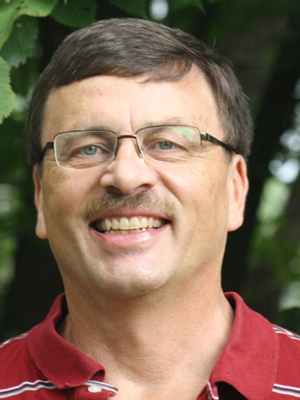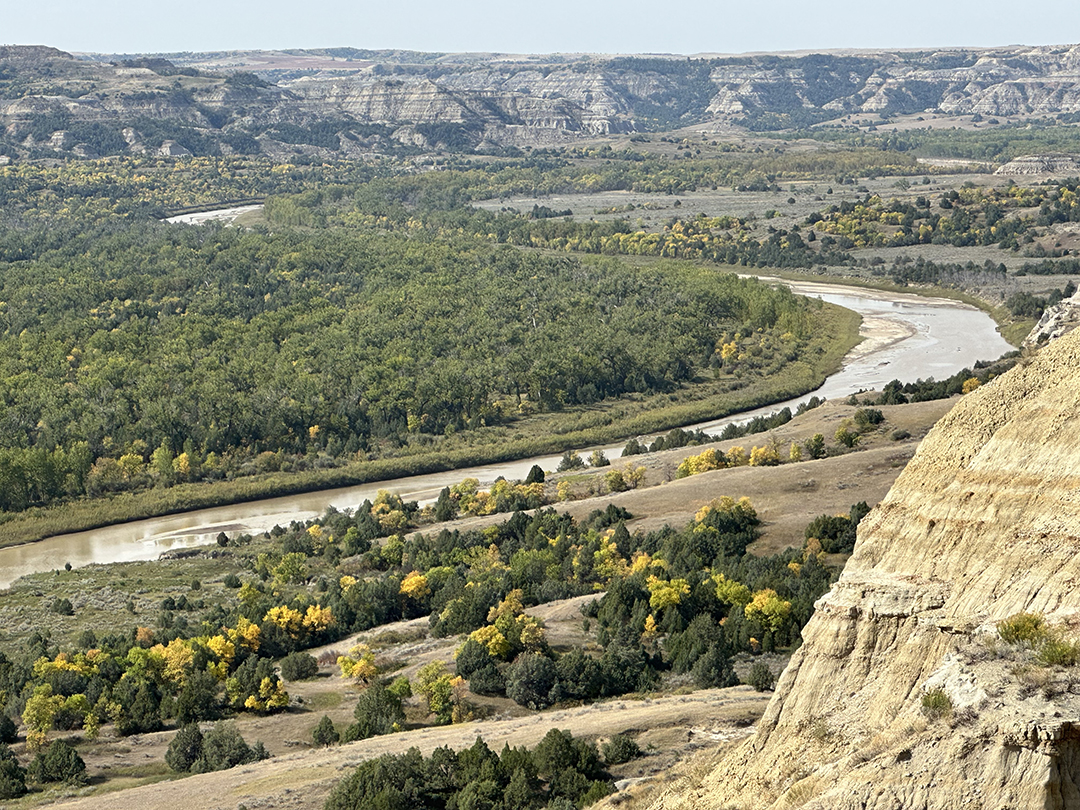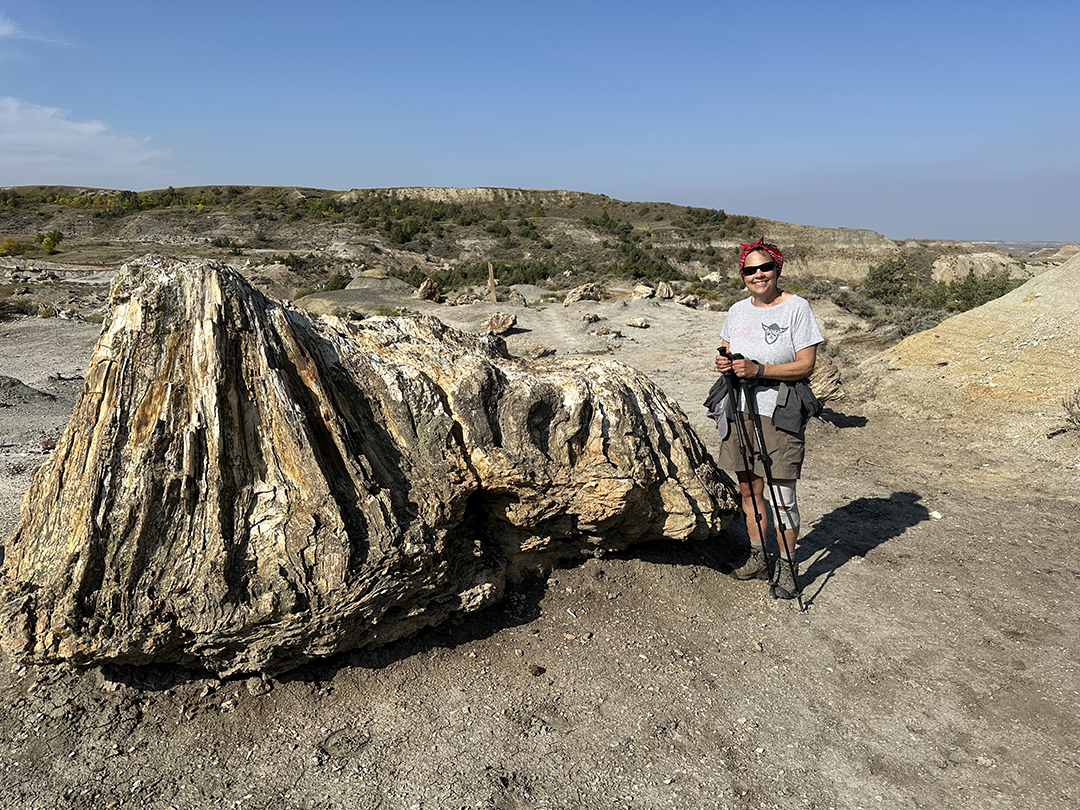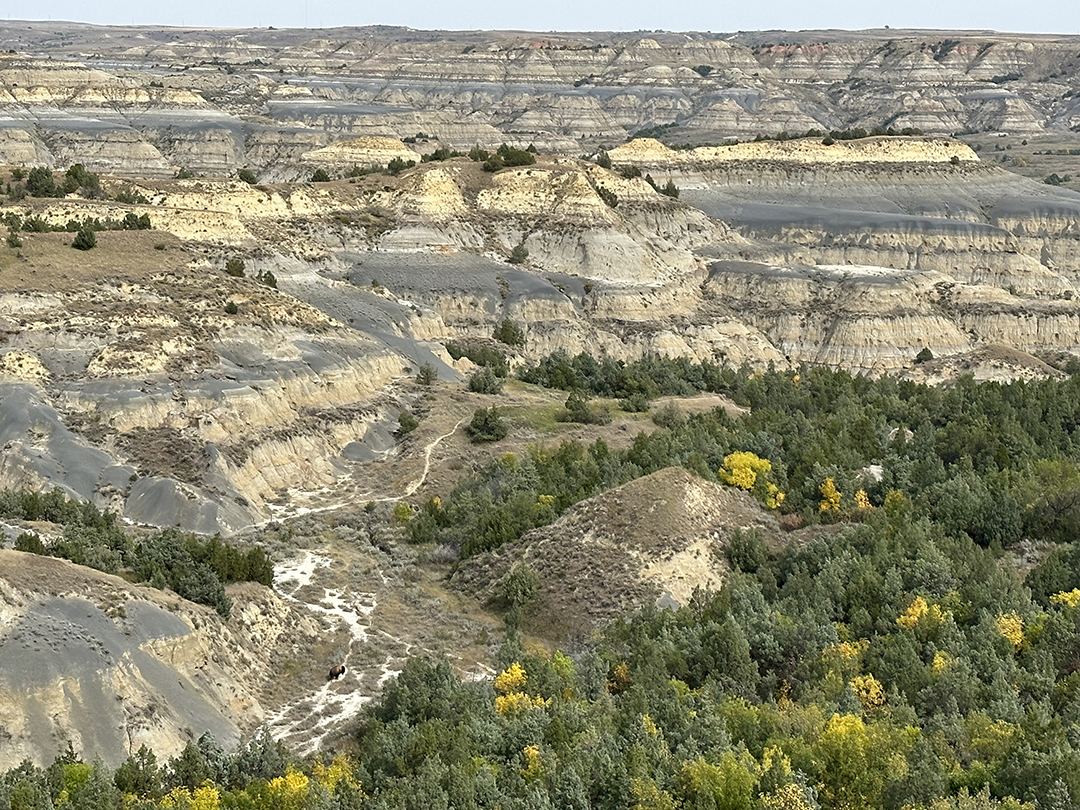Highlighting the Theodore Roosevelt Wilderness (even if the National Park Service won’t)
By Kevin Proescholdt

This fall, my wife Jean and I visited Theodore Roosevelt National Park in western North Dakota. Though we had driven through the area on I-94 in the past, we had never explored the park, nor visited its designated Wildernesses. We had a wonderful time visiting and hiking in the park, and exploring the Theodore Roosevelt Wilderness.
We found that the National Park Service (NPS) itself does very little to highlight the Theodore Roosevelt Wilderness within the National Park, and it was very difficult to find information about the Wilderness from the NPS. That needs to change, but that situation also unfortunately reflects the NPS’s generally lackadaisical and cavalier attitude toward Wilderness across the nation.
Theodore Roosevelt National Park honors its namesake conservation-minded president who first came to the Dakota Territory in 1883 to hunt bison, and later ranched these rugged, eroded badlands. The park has two main units, the South Unit near the town of Medora, and the North Unit, located a staggering 68 miles north of the South Unit.
The park also contains 29,920 acres of Wilderness, designated by Congress in 1978. In the North Unit of the park, two Wilderness units total 19,410 acres, separated only by the paved road that runs 14 miles from the east entrance to a dead-end overlook in the west. In the South Unit of the park, there is one 10,510-acre Wilderness unit in the western end. All three units are known collectively as the Theodore Roosevelt Wilderness. The Little Missouri River runs adjacent to the Wilderness in the South Unit and through the more southwesterly Wilderness in the North Unit.
One day, Jean and I hiked the Caprock Coulee Trail in the North Unit of the park, a 4.1-mile loop that took us in and out of both Wildernesses in that unit. We started at the road, climbed steeply up into the southwesterly Wilderness, and came out at a high elevation with stunning views down into the wild Little Missouri Valley. The trail then took us out of the Wilderness, past the River Bend Overlook just off the road, and then back across the road into the more northeasterly Wilderness unit. We hiked high up on a ridge, with fabulous views down both sides of the badlands landscape. On our north side, we looked deep down into a valley with one lone bull bison. Little did we know then that we would encounter that same bison after the trail dropped us down to that valley floor. All in all, we enjoyed wonderful glimpses into the wild Wildernesses of the North Unit.
The next day, we hiked in the South Unit of the park beginning at the far western edge of the park. Here again we hiked in Wilderness, including grasslands atop a plateau past wild horses, before we dropped down into an eroded valley full of the petrified stumps of an ancient forest. This petrified forest is believed to be the third largest petrified wood area in the United States after Petrified Forest National Park and Yellowstone National Park. The 60-million-year-old petrified stumps provided a vivid example of what Wilderness Act author Howard Zahniser may have meant when he once wrote about Wilderness projecting the ‘eternity of the past into the eternity of the future.’ An amazing place, to be sure.
There are certainly some wilderness stewardship challenges at Theodore Roosevelt. About 200 feral horses, descendants of escaped ranch horses in the area, live in the South Unit of the park, including that Unit’s Wilderness. They are classified as non-native livestock and can negatively impact the park’s natural resources, but are popular with many park visitors. The NPS is now trying to decide what to do with these horses. In the North Unit, the NPS maintains a small “demonstration herd” of about nine Longhorn steers as a reminder of the badlands ranching history. Should this non-native species also remain in the designated Wilderness, with all the negative impacts that cows inflict on Wilderness? These are just two wilderness stewardship issues that should receive more public attention at Theodore Roosevelt National Park.
Despite these amazing designated Wildernesses, the NPS has virtually no information available about them. I asked at all three visitor centers for information about the Wildernesses, but no brochures were available. No wilderness management plan. Nothing in the park’s tabloid newsletter. No text in the park’s brochure, though the maps in that brochure do show the Wilderness boundaries. Nothing in the Superintendent’s Compendium of rules and regulations. The Wilderness was mentioned in the separate brochure for the petrified forest, and there was a wilderness sign at the park boundary leading to the petrified forest, but many park visitors would never know that the park contains nearly 30,000 acres of special, Congressionally-designated Wilderness.
This lackadaisical attitude toward Wilderness by the NPS goes way back. As long ago as 1957, NPS Director Conrad Wirth testified against passage of what became the 1964 Wilderness Act in its very first Congressional hearing. Wirth, in essence, didn’t want any new law that impinged on the NPS’s prerogatives; the NPS felt it could manage National Park backcountry just fine without the restrictions that the Wilderness Act imposed, thank you very much.
Though the NPS eventually supported passage of the Wilderness Act in the Kennedy and Johnson administrations, the agency’s begrudging attitude toward Wilderness continues to this day. The NPS often appears to feel that the meaning of Wilderness is quite malleable, and should be open to wide NPS discretion to do whatever the agency wants to do. And there is often a subtle arrogance in the NPS about the agency itself and hubris toward Wilderness on the part of the agency—other federal agencies may cut down trees or drill for oil and gas, but the NPS is better than that and knows how to protect national park lands, without the interference of the Wilderness Act. Hence, we see the NPS today often illegally authorizing helicopter use in Wildernesses for routine work or allowing permanent monitoring stations for research projects because the NPS wants it and, besides, which other federal agency protects its lands any better?
And some of that attitude seems to have manifested itself even in Theodore Roosevelt National Park, with the agency’s lack of almost any information to highlight the Theodore Roosevelt Wilderness. That Wilderness is indeed quite special, as this essay hopefully may have begun to show. Here’s wishing that with this essay and future involvement, Wilderness Watch can help highlight the Theodore Roosevelt Wilderness, even if the National Park Service won’t.
Kevin Proescholdt is the conservation director for Wilderness Watch.
Photos from top:
- Looking down into the Little Missouri Valley from the Caprock Coulee trail in the southwesterly Wilderness in the North Unit of the Park.
- Jean and a massive petrified tree stump in the Petrified Forest, located in the Wilderness in the South Unit of the Park.
- Looking north into the northeasterly Wilderness of the Park's North Unit from the Caprock Coulee Trail, with the lone bison bull in the lower center.
Editor's note:
“Wilderness Experienced” is a platform to share stories of recent experiences in Wilderness. Stories focus on the virtues of Wilderness and/or challenges facing the National Wilderness Preservation System.
Commenting guidelines:
We encourage readers to engage the authors and other commenters through the comment feature. Please be respectful and thoughtful in your response, and focus your comments on the issues/experiences presented. Please refrain from personal attacks and harassment, using rude or disruptive language, providing misinformation, or promoting violence or illegal activities. We reserve the right to reject comments. Thank you for your cooperation and support.
Click here to read another Wilderness Experienced story. See what you can do to defend America's National Wilderness Preservation System here.
When you subscribe to the blog, we will send you an e-mail when there are new updates on the site so you wouldn't miss them.
Contact Us
Wilderness Watch
P.O. Box 9175
Missoula, MT 59807
P: 406.542.2048
Press Inquiries: 406.542.2048 x2
E: wild@wildernesswatch.org
Minneapolis, MN Office
2833 43rd Avenue South
Minneapolis, MN 55406
P: 612.201.9266
Moscow, ID Office
P.O. Box 9765
Moscow, ID 83843




Comments 33
I, too, do not mind that the NPS has essentially ignored the large areas of wilderness within TRNP. I've lived near the park for the past decade and have done a lot of hiking and photography in all three units during every season and in every type of weather. During winter, I might not even encounter another person in the north unit. No, we do NOT need better access to the wilderness areas, for the visitors to national parks today often treat them as if they are petting zoos or amusement parks. I never wish to see "touron" videos from TRNP, much less our wilderness areas here. Visitors already speed in TRNP (just as they do in other national parks, rushing to click off some sort of mythical "checkbox" on their to-do list) and they don't respect the wildlife or natural areas (the climbing of tourists all over and around the cannonball concretions site is a prime example, for now it is like concrete all around the formations and graffiti is impossible to avoid). There is a good reason the bighorns in the north unit are often elusive. I am thankful to have the park units, wilderness areas and the surrounding Little Missouri National Grassland even if it often requires packing in on foot with camera gear to obtain my images. The NPS hasn't changed a great deal since I was a kid (quite obvious during the arguments regarding the feral horses in the south unit... Sorry, but those horses certainly don't damage or tax the environment any more than the bison and elk... I've NEVER seen any evidence of that during my south unit hikes) and the administration has enough issues simply trying to maintain the paved roads in both units. Do we really want heightened awareness of the wilderness areas advertised? There are a LOT of people from all over the world who simply have no business in wilderness areas, much less within even a national park.
As for the use of helicopters, the use of such aircraft is likely THE most humane and THE safest way to manage the movement of the bison. There's no way on earth I'd attempt such herding on horseback (bison are NOT anything like cows... they are likely the most common danger to visitors in the park, even moreso than the prairie rattlers, elk or cougars). It is a silly argument that simply hasn't been thought through... Contrary to popular belief, the large wildlife in our wild areas simply must be managed, for the alternative hurts that wildlife far more. As long as we desire to own land, drive cars and live with electricity/heat/etc., the increasing population is going to push at the boundaries of these wild areas, limiting the resources the wildlife can access... Everyone wants it both ways and that is simply impossible without compromises.
Respectfully, I urge the NPS to maximize its efforts to preserve national treasures and in the interests of the people.
This article by Kevin reminds me of my surprise to find trail workers using gas powered "weed eaters" to clear brush from trails in Wilderness in Glacier National Park (in the 80's). Their response when I questioned it was that they didn't think they were in Wilderness and that GNP could do it because it was more efficient. And both Glacier and Yellowstone Park have in the past resisted designating more Wilderness in those Parks because it would make it more difficult for them to manage the landscape.
CURRENT MEMBERS OR NPS NEED TO WATCH THE KEN BURNS DOC. ON OUR NATIONAL PARKS....THEY SEEM TO HAVE LOST THE SPIRIT AND THE WILL TO LOVE OUR PARKS....WELL, SOME OF THEM....MAYBE THOSE AND T. R PARK.
NPS stop acting as if you care and protect not neglect our living wild animals and create an environment of protection and peace for them for us.
The NPS does not seem to protect the wilderness and its animals ! Instead it acts against them and does the opposite !
Kevin,
Please help us to protect the Cumberland Island NS Wilderness from being regularly burned by misguided NPS !! Thousands of acres are scheduled for burning over the next couple years.
Contact me.
Carol
Protect ALL nature/wildlife!!!!
We need to protect and spread the good news about various parks and wilderness areas.
Thank you for your important work. We must support every effort for the rewilding of our lands and oceans.
Thank you
Selfishly I would note that the NPS attitude (which seems to be to "hide" wilderness areas) means there are fewer people around when I visit them.
I tend to agree with you. I don't mind putting in some effort to get information on wilderness areas. There are too many people visiting natural areas and treating them like amusement parks.
This wilderness area needs to be protected and made more accessible so people can enjoy it and come to love and protect it.
The National Park Service should do more than what it is doing to highlight the Theodore Roosevelt Wilderness within the National Park.
I believe my husband and I also trekked the trail you mention. Did you run into round solid balls of every size? Amazing mini-waterfalls and other worldly scenes seemed to be everywhere. The vistas were incredible.
I appreciate your efforts to preserve these precious places. So few are left. They must be preserved!
Thank you for this informative article and beautiful pics, especially of the lone bull bison. To me, I want to keep the wild in Wilderness and would like it if there were even more bison, horses...yet less cows (which are destructive to our environment). I've learned how devastating and cruel the so-called management by people of wildlife (be it horses, bison, wolves) is to these creatures when there are other humane options. Keep the wild in Wilderness. Leave No Trace.
Wilderness stays wild best when not much public attention is called to it. I sympathize with the dedicated nature lover who wants to visit, but saw some of my favorite wild places being "loved to death" during the pandemic lockdown, so I don't want to call for the NPS to make it easier to find & visit designated wilderness places.
I totally agree.